Two faces of a coin

Written by Umara Qureshi
Umara Qureshi is a passionate and values-driven Head of School with a proven track record of securing strong outcomes across a range of settings—including the successful launch of a start-up school. Deeply committed to equity, inclusion, and social justice, she believes in the transformative power of education to change lives. Umara leads with integrity, fosters cultures of high expectation and belonging, and champions staff development, pupil voice, and ambitious opportunities for all learners.
Growing up as a British ethnic minority girl in south east England in the 1990s, I was oblivious to my dual nationality, my ethnicity being a minority and that I essentially lived in two different worlds.
And it was with great ease that I transitioned from one world to the other. I was able to behave according to the expectations of the community I found myself in and it was absolutely natural to adapt etiquette and lifestyle. Being able to adjust and adapt into two contrasting cultures and societies was automatic. It was absolutely normal to have two identities. It was and is so easy to switch either on or off or fuse the two together. And I believe that is the beauty of having two faces to a coin.
During adolescence, I was lucky enough to be around peers from a similar background. My culture was accepted. As teenagers, I explored and shared cultures with my friends from different ethnic backgrounds and we celebrated our identities. It was normal for us to be different. I think that’s the beauty of growing up in Luton. As I grew up, there were more cultures I was exposed to. It was lovely just meeting them and getting to know them, and sharing our cultures and celebrating our differences.
The ease of social and cultural fluidity became a burden as the issue of identity and the social pressure increased into adulthood. And I don’t think that’s inevitable. I think it’s perceptive. Social media is the greatest platform for people to express their identity issues and exposure to such material festers insecurity. Movies like ‘Bend It Like Beckham ‘ exacerbate identity crises as they focus on the dilemmas that not belonging to one culture can create and portray it as a hindrance. It loudly suggests that holding onto traditional culture will hold girls back from fantastic careers. This is untrue and an injustice to ethnic minorities. Unknowingly you develop a perception of having the same inferiority that others express, regardless of your own experiences and successes. I only realised how I feel about these portrayals when I watched it with my daughter and saw the seeds of identity crisis being sown with adult eyes. The need to impress, be like others around and the desire to not be different becomes prevalent and feeds the identity issue.
I was lucky enough to have many role models giving me the confidence to continue celebrating my ethnicity, nationality and culture but I met lots of people from the same background as me, who weren’t proud of it and who didn’t like it. I even know people who say that they have no ethnicity and they don’t consider themselves to have any ethnicity. I can’t pretend that I didn’t feel the burden and pressure too. The pressure to be the same as others puts doubts in your mind and it makes you think that you’ve drawn the short straw because you face challenges around your identity. Feeling as though you don’t fit in with people around you and you are looking at one particular group and wondering why you couldn’t have just been like them so that you didn’t have to face these challenges. However, I believe that we’re very lucky to have two sides. The beauty of being British Asian, is that you’ve got a double identity, you’re not two halves. I think that’s looking at the glass being half empty, when in fact, the glass is doubly full.
The greatest assumption that people make is that all British people lead the same lifestyle and that’s not true. Within British communities, individuals do not all do the same things. And there is not an expectation for every British person to fit a stereotypical, specific lifestyle to be accepted or successful. I believe that this is the biggest misconception. Even if you do not do things in the same way as others around you it does not hinder you in leading a successful life.
The key points for me are that we have additional lifestyle choices, lifestyle events, skills, languages, culture, processes, emotions, personal family links and social attributes stemming from our ethnic background that enhance us as people and do not limit us.
We have our ethnic background and we also have a British background. We can pick, choose, fuse and innovate. So we’ve got more to our lives, not less. Having these two identities has doubled our life experiences, not halved it. We’re not torn between two worlds, we are spread across two worlds. Not everyone has this option. It is an existence to celebrate, not to be conflicted about. We shouldn’t be conflicted. We should recognise that we do have more to offer. We have a lot more to offer as we’re always steering the way on this newly paved pathway and balancing the vast knowledge, experience, pleasures, perks, broad mindedness, inclusivity and diversity. We need to recognise the potential that we have. Stop being a coin with two faces, embrace your potential and become three dimensional.
We have greater potential being multi-faceted. Having this rich ethnic / nationality is a combination that makes our life doubly wholesome.
The empty deserts sun scorched surface
In the moonlight is tormented by a cold menace
How blissful the union of the sun and moon could be
The immense respite and relief it could bring
The vibrance of the butterfly is unknown in the cocoon
Emergence from confinement allows the beauty to bloom
How proud, bold and brave it has to be
Its display and its presence makes the natural world sing
Reflections on an Unseen Mind: Rethinking Education Through a Neurodiverse Lens

Written by Angel Hinkley
Mathematics Teacher & facilitator of the Anti-Racism Society at Drumchapel High School.
Just finished watching Jamie Oliver’s programme on dyslexia, and I’m left with so many thoughts—questions buzzing in my mind, especially as someone who is dyslexic myself. These questions feel so fundamental — yet perplexingly remain on the periphery of our educational discourse.
Why, truly, is early diagnosis not treated as an absolute, non-negotiable priority? What kind of training will teachers actually receive—training that helps them recognise dyslexia, nurture different minds, shift their understanding, reshape their approach, and see the brilliance beneath the difference? Who writes these programmes? Who decides? And crucially—will any of the architects have walked this path themselves, peering through the same fog, navigating the same hidden gaps?
Before I started school, I felt… normal. Confident. My dad said I knew my own mind. I was curious, chatty, and bold. Part of growing, of course, is the necessary challenging of that self-assurance, a healthy friction. But what awaited me was not friction, but an unhealthy shift, a fundamental reordering of my landscape that would cast long, often difficult, shadows.
The first chill of difference settled in a primary school classroom. Something about the learning – the way letters danced, the way sounds refused to anchor themselves to symbols – felt intrinsically wrong. I’d just been given glasses, and I recall my father’s anxious voice, wondering aloud if these new lenses were the problem: “My daughter has turned thick!” Harsh words, yet spoken not in cruelty, but in the fear of a parent watching his child struggle, change, her spark dimming and not knowing why.
My dad sought answers at a specialist centre. I remember the tests vividly. Not the content, but my desperate strategy: to outsmart them. To answer not as I would, but as I imagined a ‘normal’ person would. I didn’t want to be me. And then came the diagnosis: dyslexia. I felt it. Deeply. They told my dad that the good news was I had worked so hard in the tests, I might one day be “average.”
Average.
The consolation? That the effort I’d exerted in trying to conform was ‘outstanding!’ With such effort, they predicted, I might one day become ‘average’! I knew that ‘average’ was no comfort to a father’s hopes. I felt broken and flawed. The implication was clear: my inherent way of thinking was a deficit, my ‘normal’ was unacceptable, and the highest aspiration offered was mediocrity measured against a standard I could never truly meet. What I didn’t yet understand was that I was navigating not my own failure, but the failure of a system that couldn’t see me.
But that very day, my dad turned it into joy. We did what Londoners, rushing headlong through their own lives, so rarely do: we became tourists in our own city. We paused before landmarks we’d never really seen—Parliament, the Tower, the Thames, the Changing of the Guard, St Paul’s with its whispering galleries. To this day, I still love to go there, with such fond memories in my mind—fun, love, comfort and self-assurance; forever etched my heart. It was, I think, the seed of the resilience I would come to need. Because school didn’t get easier.
The remaining primary years unfolded with a particular kind of quiet humiliation. My books contained few words—simple stories, devoid of the depth that excited my curious mind, hidden under the desk in shame. I was taken from the classroom for ‘special lessons’, but I couldn’t tell you what I learned—only how it felt to leave the classroom: different, embarrassed.
Education became a world where I was perpetually misunderstood. Learning was relentlessly dumbed down. Later choices only compounded the frustration: English Literature was replaced with Typing (a cruel irony for any dyslexic!), and Classical Studies replaced Latin — a subject I now realise could have helped me, through the understanding of word structure and roots: morphology.
Dyslexia, I have come to understand, is complex. It is, fundamentally, a different way of learning. It is also, undeniably, a disability. Even typing that word, owning it, is hard. I say it with reluctance. Mainly because of the world’s ongoing inability to understand it without seeing it as something lesser. People still judge.
But the truth is, navigating the world through a different lens brings unique strengths. And yet, within our education systems, we remain anchored to the standard measure.
It’s taken me decades to learn that some of my struggles—like not hearing certain phonetic sounds—were neurological. I’ve had my hearing tested countless times. Turns out, it wasn’t my ears—it was my brain. No one told me that. I found out from a documentary. If diagnosed early, those sounds could’ve been taught, reshaped in my brain’s formative years. That early window—so often dismissed—matters. It could have spared the burden I carry every day.
For me, this auditory gap is profoundly disabling. Because when you can’t hear a sound properly, you can’t pronounce it. And when you can’t pronounce it, you can’t spell it. The cycle repeats.
Correction becomes constant—and even well-meaning correction starts to sting. Sometimes, the correction offers a fleeting clue. Mostly, it washes over me, leaving only a residue of quiet despair. Negative thoughts creep in. Do they think I simply wasn’t paying attention? Do they think I’m stupid? Beneath the surface lies a persistent whisper: I am stupid. I know I’m not. But feelings rarely ask permission from logic. It reinforced that deeper feeling of a system not seeing me. Only my mistakes. I mask it well, most people would never guess.
Yet, amidst these shadows, glimmers of hope emerge. Remarkable work is being done—work that focuses not on forcing the dyslexic brain into a neurotypical mould, but on teaching it in the way it learns best. I’ve discovered morphology— the structure, origin, and meaning of words. Learning to break down words into roots, prefixes, and suffixes has eased the burden of spelling and pronunciation. It’s been a quiet revelation. As an adult, time is limited, and progress is slow but undeniable within the safety of my own home. But out in public, where my confidence falters, the words still come out wrong. Had this been the way I was taught in school, it would have ignited my mind and my pronunciation and spelling would have improved.
I also discovered SQR (Survey, Question, Read) —a structured strategy to navigate dense texts. First, you survey the text (titles, headings, summaries). Then you question—what do I want to learn? Finally, you read actively to find key ideas. This gives reading structure and purpose—an intellectual pathway I wish I’d known earlier.
How many classrooms teach strategies like these? How many teachers even know they exist—or are given the time to explore them? What else is out there, still undiscovered?
The concept of “mixed abilities” feels ripe for reimagining. It shouldn’t merely be about different paces on the same track, but about genuinely exploring how we learn differently, how our diverse strengths can weave together to create a richer understanding. It should expand our notion of intelligence, not constrain it.
I work with many neurodiverse young people, including those who are autistic, those with ADHD, and those whose paths diverge from my own. Each day, their unique lens on the world — their capacity for empathy, their brilliant insights — deepens my understanding — my passion for life. I listen. They teach me how to teach. They show me how wide the world truly is. Yet I, too, must navigate it—stuck within the rigid constraints of education itself. And it’s a constant balancing act. But I see the cost. I see the toll it takes on these young people—the strain on their mental health, the erosion of their resilience, the crushing weight of perfectionism; a common trait in those who feel they don’t belong but are desperately trying to. The fear of imperfection is ever-present.
I hear the echoing mantra of ‘raising attainment.’ And then I think of what Jamie Oliver’s programme reminded us: we, the neurodiverse, make up around 25% of every classroom. One in four. That’s not a problem to be fixed. That’s a revolution waiting to happen. And still… we lose too many. Bright minds stranded on the shores of a curriculum that never saw them. Children who think they are broken, simply because the mirror they’re shown is cracked and narrow. I see it and feel it in them.
And what is attainment measured by? Tests designed for neurotypical processing? By curriculum that value rote learning over deep structural understanding or creative insight?
So, I write this for them. For the children still sitting in classrooms thinking they are less. For the educators who are trying—but feel unsure, overwhelmed, or simply don’t have the time to learn and explore. For the architects of future programmes: please, build with us, not just for us.
We are not broken. We are not failed versions of a system that was never built for us. We are different minds, with different strengths, waiting not to be fixed, but to be seen.
The Hidden Wounds of Leadership: When Strength Becomes Survival
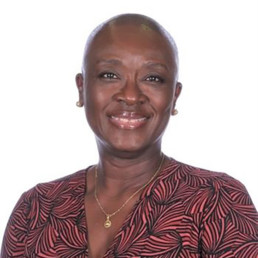
Written by Remi Atoyebi
Remi Atoyebi is an experienced Headteacher and ICF Certified Transformational and Leadership Coach. She is a contributor to The Headteachers’ Handbook and a mentor to over 50 school leaders across the UK. As a leader from a Global Majority background, she is passionate about inclusive leadership, psychological safety, and creating safe spaces for underrepresented voices.
As one of just a handful of leaders from a Global Majority background in the area I serve, I’ve had to do more than lead a school. I’ve had to build trust from the ground up, raise community aspirations, and create a sanctuary of belonging for children who had so often been left behind. Publicly, I was praised. Data climbed. Headlines followed. People saw progress.
But what they didn’t see was me.
They didn’t see the toll it took: emotionally, mentally, physically, to keep showing up, every single day, as the “strong one.” The “resilient” one. The one who could weather it all. Behind the applause, I was slowly falling apart.
As a Black woman in leadership, I became an expert at navigating systems that were never designed for me to thrive in. I wore the armour of excellence because I had no choice. I bore the weight of expectation, not just professionally, but culturally: the silent pressure to prove, to represent, to protect. I was leading a school, yes. But I was also holding up the dreams of my community, the pride of my family, and the unsaid duty to never falter.
Then one day, my body gave in. I was taken by ambulance from work to A&E. I had suffered a Transient Ischemic Attack (TIA): https://www.nhs.uk/conditions/transient-ischaemic-attack-tia/ and soon after, I was diagnosed with Post-traumatic stress disorder(PTSD): https://www.nhs.uk/mental-health/conditions/post-traumatic-stress-disorder-ptsd/overview/
These events were not from one tragic moment, but from the relentless drip-feed of stress, microaggressions, harassment, racial trauma, and systemic pressure that had compounded over years.
The trigger was one parent’s sustained harassment over two and a half years: sometimes emailing up to three times a day to make unnecessary demands, engaging in attention-seeking behaviours, inciting other parents, and making incessant reports to the Local Authority Designated Officer (LADO), Office for Standards in Education, Children’s Services and Skills (OFSTED), the Teacher Regulatory Agency (TRA), and the Information Commissioner’s Office (ICO).
I had been leading while bleeding.
This is what we don’t talk about enough. The unspoken cost of being the first. The only. The one expected to be everything to everyone. For many Black women in leadership, success often comes wrapped in loneliness. We carry the school, the staff, the children, their families and then we carry what no one else sees: the barbed comments, the subtle exclusions, the extra scrutiny.
Over time, I’ve come to name this for what it is…structural neglect. Not always overt. Not always intentional. But neglect nonetheless: of our wellbeing, our emotional safety, our humanity. Mental health services are not culturally competent. DEI work barely scratches the surface. And leadership frameworks rarely account for the invisible labour of navigating bias and battling stereotypes.
The Equality Act 2010 lists both Race and Disability as protected characteristics. But where was the protection when I was unravelling from the inside out? Where were the policies that acknowledged the trauma of ‘performing strength’ in the face of constant pressure? Where was the care for leaders like me?
And let’s talk about race and mental health. Black women are less likely to be referred for therapy, more likely to be misdiagnosed, more likely to go unheard. (https://www.mind.org.uk/information-support/tips-for-everyday-living/racism-and-mental-health/#HowRacismCanAffectYourMentalHealth).
In leadership, the expectation to remain poised and polished becomes a ‘prison’. We silence our needs just to be seen as competent and effective.
So, how do we disrupt this?
We start by telling the truth. We say out loud that leadership takes a toll. We give permission to ourselves and others to feel, to pause, to say “this is too much.”
We embed trauma-informed approaches not just for children, but for the adults in our schools, especially those living through racialised experiences. We make room for healing. For culturally competent therapy. For coaching that holds space rather than just drives outcomes.
We must let go of the myth that strength means silence, and in its place, we embrace a deeper truth that vulnerability is not weakness, it is wisdom. It is the path to healing, to connection and to lasting change.
I’m still healing. I’m still learning how to lead without sacrificing myself. Still untangling from a version of success that asked me to shrink, to be silent, to disappear. But no more. From here on, I will be leading differently: to protect my health, my wellbeing and ultimately, my life.
And if my story does anything, I hope it reminds someone, maybe you, that you are not alone. That leadership must never cost you your health. That you don’t have to break to belong and succeed.
Leading with Heart: Why Humanity Belongs in Leadership
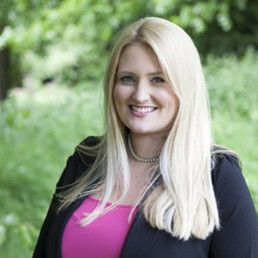
Written by Sarah Mullin
Deputy Headteacher and EdD student
When Chancellor Rachel Reeves appeared tearful during Prime Minister’s Questions, it became national news. Speculation followed. Some questioned her professionalism. Others expressed empathy. But what if her emotion wasn’t about weakness or pressure — what if it simply showed that she cared?
We may never know what Reeves was feeling, and that’s not the point. What matters is how society responded. In contrast, when Prime Minister Keir Starmer’s voice cracked with emotion moments earlier, many praised his sincerity. The double standard reminds us that we still judge emotional expression differently in men and women — and that’s something schools have the power to change.
In my doctoral research with women secondary headteachers, many shared the pressure to appear composed at all times. One told me:
“I’ve learned to hide my emotions because if I show them, people assume I’m not coping.”
Another said:
“I care deeply about my staff and pupils. But there’s still a sense that to be respected, you have to be hard.”
This expectation isn’t just unfair — it’s limiting. When we reduce leadership to stoicism, we ignore the relational skills that make leaders truly effective: empathy, emotional intelligence, and care.
That’s why these public moments of emotion matter. Because our young people are watching.
Girls need to see that leadership doesn’t require hiding your feelings or shrinking your identity. That you can be strong, successful, and still be yourself. And boys need to see that care and vulnerability aren’t weaknesses — they are part of responsible, emotionally mature leadership.
In schools, we have the chance to model a broader, healthier version of what leadership looks like — not just in what we say, but in how we lead. Staff and students alike benefit from environments where humanity is welcomed, not hidden.
Let’s create a culture where showing heart doesn’t undermine leadership — it defines it.
Courageous Conversations
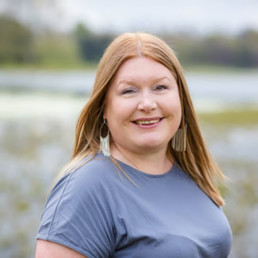
Written by Hannah Wilson
Founder of Diverse Educators
What is a Courageous Conversation?
In courageous conversations, whether in the context of performance appraisal, mentoring, or coaching, individuals are encouraged to express their views openly and truthfully, rather than defensively or with the purpose of laying blame. Integral to courageous conversations is an openness to learn.
What Is an Example of a Courageous Conversation?
Typical examples include handling conflict, confronting a colleague, expressing an unpopular idea on a team, asking for a favour, saying no to a request for a favour, asking for a raise, or trying to have a conversation with someone who is avoiding you. Research shows that many women find such “courageous conversations” challenging.
How Do You Frame a Courageous Conversation?
- Set your intentions clearly.
- Create a container.
- Prepare facilitators & groups.
- Set it up.
- Open with vulnerability.
- Have the discussion.
- Come back together and close.
- Support each other.
What Does the Research Tell Us About Courageous Conversations?
According to the work of Susan Scott there are The Seven Principles of Fierce Conversations:
- Master the courage to interrogate reality. Are your assumptions valid? Has anything changed? What is now required of you? Of others?
- Come out from behind yourself into the conversation and make it real. When the conversation is real, change can occur before the conversation is over.
- Be here, prepared to be nowhere else. Speak and listen as if this is the most important conversation you will ever have with this person.
- Tackle your toughest challenge today. Identify and then confront the real obstacles in your path. Confrontation should be a search for the truth. Healthy relationships include both confrontation and appreciation.
- Obey your instincts. During each conversation, listen for more than content. Listen for emotion and intent as well. Act on your instincts rather than passing them over for fear that you could be wrong or that you might offend.
- Take responsibility for your emotional wake. For a leader there is no trivial comment. The conversation is not about the relationship; the conversation is the relationship. Learning to deliver the message without the load allows you to speak with clarity, conviction, and compassion.
- Let silence do the heavy lifting. Talk with people, not at them. Memorable conversations include breathing space. Slow down the conversation so that insight can occur in the space between words.
Let’s talk about the criticisms of EDI work

Written by Shammi Rahman
Shammi is a Diversity and Equalities Adviser for HFL Education and a former member of the Advisory Board for the Children's Commissioner. She brings 19 years of secondary education experience, specialising in Religious Studies. Shammi has played a key role in promoting high-quality Religious Education as an Executive Leader for NATRE,working with SACRE boards and providing support for teaching Islam at GCSE and A Level. With a background in championing community cohesion and interfaith activities with young people in Milton Keynes, Shammi advocates for diverse student voices. Dedicated to enhancing race equity in education, she supports school leaders through bespoke support or training for a more inclusive educational landscape.
I’m very aware of the conversations happening across organisations amongst EDI (Equity, Diversity, and Inclusion) professionals on LinkedIn and those facing growing scrutiny. Whether from leadership, colleagues, wider society or online, there are increasingly vocal critiques about how EDI is approached and who is seen as credible in the space. Understanding these criticisms, whether we agree with them or not, helps us engage more thoughtfully and improve the impact of this vital work so we can all work together with meaning.
Here are some of the common criticisms I am seeing being expressed:
- Questioning Authenticity and Expertise – the idea that some EDI professionals are self-appointed or lack formal expertise.
- Questioning Motivations and Job Security – A belief that some professionals are driven more by job preservation or ideology than by organisational outcomes.
- Perceived Bias – Advisers seen as leaning left politically, overly virtuous, or part of ideological “echo chambers.”
- Questioning Communication Style – some feel the language can feel “othering” or overly dramatic, especially around race, and allyship.
- Questioning the Emotional Impact – seeing Distress in the workplace as real but sometimes viewed as performative or exaggerated.
- Framing – as “black-and-white thinking,” often linked (rightly or wrongly) to neurodivergent traits or rigid ideologies.
- Concerns about Social Justice Orientation – the idea that the work is politically motivated or aligned with activist agendas.
Many of these critiques misunderstand the depth and purpose of equity work, while some raise perfectly important challenges that EDI leaders should reflect on. I think a much deeper understanding is essential for anyone engaging in this space, both those who support EDI and those questioning it to move forward with greater clarity, purpose, and mutual respect.
So how do we navigate pushback? Here are my reflections:
Working in the field of Equity, Diversity, and Inclusion (EDI) and in my role, specifically focusing on race and religion, is incredibly rewarding, but it comes with its own challenges, which I personally find helpful in helping me understand better and reassess how I help people. It is particularly interesting when faced with resistance or pushback because these challenges can manifest in many forms, from scepticism about the value of the work to outright dismissal of lived experiences.
As someone who left the teaching profession because I knew, and have known, for many years education has much work to do in race equity and understanding faith communities better, I have been very grateful to have been working closely with some of the most inspiring school leaders, but I want to share some personal reflections on these challenges.
The goal isn’t to point fingers and I don’t know anyone who has that intention. My intentions are to foster understanding and open the door for more honest, respectful conversations, even if we disagree, about how we can all contribute to creating better, more inclusive workplaces. That’s the bottom line. More importantly for the benefit of doing right by the children and communities we serve and care about.
- The Struggle to be Heard: Questioning Experience and Expertise
One of the most frustrating aspects of EDI work is when your expertise or lived experience is questioned. The very people who are often asked to speak out about racism, exclusion, or marginalisation are met with scepticism about the validity of their experiences. It’s important to remember that for many of us in this space, we’re not just speaking from academic knowledge, we’re also sharing the experiences of colleagues, friends, and family members who face these challenges daily but often feel too unsafe to speak up. The real cost of these discussions is often invisible, but it is crucial to acknowledge and respect the lived experiences behind them. - The Burden of Proof: Constantly Justifying Your Claims
Another significant problem is the expectation to constantly “prove” the validity of what you’re saying. I’ve often found myself in situations where even after providing clear evidence, whether it’s research, statistics, or firsthand accounts, the response is to ask for more proof or dismiss the evidence entirely. This can be incredibly discouraging, as it implies that the experience or evidence being shared isn’t worthy of consideration. It’s essential that we move beyond the need for endless validation and start acknowledging the lived realities of those who have been marginalised. - The Dismissal of Personal Experience
Personal stories and experiences are powerful tools for change, yet they’re often dismissed as “emotional,” “biased,” or “misunderstood.” Phrases like “You would say that, wouldn’t you?” or “I think you misunderstood” can undermine the point of the conversation. We have to recognise that personal stories are not just anecdotes, they are a crucial part of understanding the broader systemic issues. When these stories are minimised or invalidated, we lose an opportunity to connect and find solutions to problems behind the issues. - Political Labels: Don’t Pigeonhole EDI Advocates
One of the challenges of working in EDI is the tendency to be pigeonholed into a political category. People often try to label EDI advocates as “left-leaning” or “activists,” which oversimplifies our perspectives. The reality is many of us don’t fit neatly into these boxes. In fact, some of us have experienced racism from self-proclaimed liberals or left-leaning individuals. EDI advocates come from diverse backgrounds and political ideologies, just as people with racist views do and it’s important to respect that there is diversity of thought amongst all groups. The work we do is not about political affiliation, it’s about creating spaces where everyone can thrive. - Race and Religion: The Topics We Often Avoid
Why have I focused on these two protected characteristics? Not only can I relate to them, I also know many real stories of discrimination that have and still prevent people from enjoying a fulfilling career or school experience. While all protected characteristics are important, there is a consistent pattern where discussions around race and religion are either avoided or deprioritised. This is often a silent issue in many workplaces where conversations about race or religion are treated as uncomfortable or taboo. This lack of focus on these critical issues only perpetuates the marginalisation of those who experience racial or religious discrimination. So that is why it’s vital that we prioritise these conversations (where it is needed) and create environments where they can happen openly and without fear of retaliation. - Allyship and Accountability: Why It Matters
The concept of allyship often makes some leaders uncomfortable because it involves acknowledging their own role in creating change and can feel threatening. But the truth is, we cannot continue to rely on ethnically minoritised individuals to bear the burden of EDI work. Leaders, especially those with power and influence, must be held accountable for creating inclusive environments. If leadership doesn’t take responsibility for EDI efforts, progress will always be limited. True allyship involves accountability, and it’s time for those in power to step up and lead effectively and that is where my energy lies and why allyship is needed. - The Impact of Racism on Well-Being: It’s Not Exaggerated
Another reality that often gets overlooked is the profound impact that discrimination can have on an individual’s health and well-being. Many people who speak out about their experiences with racism or discrimination do so at great personal risk. For some, the consequences are dire stress-related illnesses such as heart disease or high blood pressure are not uncommon. This isn’t an exaggeration. When individuals are forced to endure toxic work environments for years, it takes a toll on their mental and physical health. Recognising this harm is essential to making meaningful progress in the EDI space. - Stereotyping EDI Advocates: A Misunderstanding
A common stereotype about those working in EDI is that they are “ideologically rigid” or predominantly neurodivergent. This stereotype not only undermines the professionalism and rigour of EDI work, but it also perpetuates a harmful narrative about those who are dedicated to creating inclusive spaces. EDI work is not about rigid ideology, it’s about fostering environments that allow everyone to thrive, regardless of background. Reducing EDI practitioners to one-dimensional labels only serves to dismiss the complexity of the work and its importance. - Racism Is Political: It Doesn’t Stay Out of the Workplace
Some critics argue that EDI work is too political. But the reality is that racism and discrimination are inherently political, they are driven by policies, social norms, and cultural attitudes that affect every part of society, including the workplace. The influence of politics doesn’t stop at the doors of the office. National and local political agendas that perpetuate racism and discrimination impact everyone, including employees. It’s crucial that we understand the broader societal forces at play and work to mitigate their effects in our organisations instead of ignoring them and again, expecting racially minoritised people to take the brunt of the negativity. - Creating Space for Open Conversations
Ultimately, tension and conflict within EDI spaces often arise when open, honest conversations aren’t welcomed or facilitated. For everyone to thrive in an organisation, we need to create spaces where all voices can be heard, where differences are respected, and where leadership is willing to listen, learn, and adapt. It’s only when we build good relations with one another and trust each other that we can truly work efficiently and inclusively.
Conclusion: A Call for Action
EDI work is not easy, but it is necessary. The challenges we face in navigating resistance, misunderstanding, and pushback are real, but they shouldn’t deter us from our mission. We need to keep the conversation going, foster empathy, and encourage leadership to take responsibility. Only then can we begin to create workplaces that are truly inclusive and equitable for everyone. This is not the time to cave into push back, this is the time to embrace and push back with something better, with collective strength, kindness and sustained commitment.
Switching on the local talent resource in international schools.
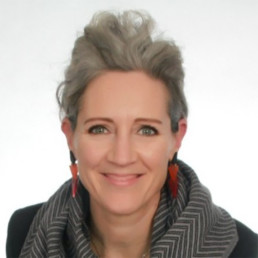
Written by Laura Mitchelson
Laura is a freelancer helping schools in Retention and Engagement. Previous roles include Director of Enrollment and Communications at Dwight School Hanoi, Impact and Innovation Unit Advisor at Qibao Dwight High School, Secondary Language Teacher at Millfield School.
According to the OECD’s Teaching and Learning International Survey (TALIS) 2018, the average annual professional development hours for teachers internationally is around 62 hours per year. Some would argue it should be more, some might debate the value of some of that PD but it’s there.
In other industries like healthcare, retail, finance, banking, IT and telecoms, the average number of hours of professional development received each year is also about 60 hours but there is one difference – in those industries, it doesn’t matter which part of the organisation you are from, you have access to the same amount of professional development – it might depend on how long you have been with the business or what level you are at, whereas in the international school sector, teachers almost always have access to many more hours of PD than their colleagues in the business management side of the school do.
When will Finance, IT, HR and Operations teams be given the same access to professional development and learning support as their teacher peers?
There is a lot to consider here – it is the road less travelled, so proceeding with caution makes sense. To start requires us looking at THREE things:
- What are the existing professional qualifications that school management team staff have? Are Finance Directors ACCA certified? Does the HR Manager have an SHRM certification? Does the IT Director have the CITM? Do school leaders and governors know these accreditations and their issuing bodies well enough to assess candidates at interview stage in these professions and does the school look for these at the recruitment stage?
- When, how and what should make up the professional development that these management team staff receive once they are at a school? Is there a career growth pathway, planned support for professional growth, where does the budget come from?
- Where can teaching and non-teaching staff come together in professional development? Soft skills development with a focus on areas like team leadership, project management, budgeting, running effective meetings, and reporting are all areas of growth that are common to educators and business managers.
By developing ALL staff, schools respect both the notion of professional growth in general, and allow these school management professionals to be seen on a level with the wonderfully qualified and heavily professionally developed teaching staff. It is appropriate and right that we shine a spotlight here.
Schools have a wide variety of options available to them when they embark on the professional development of their school business management teams. Here are some approaches that can be considered depending on the stage and needs of the individuals and teams in place:
- Internal or External Mentoring
- Coaching
- Shadow Days
- Language Lessons
- Observations
- Internal/External Training
- Online study
- Master’s Degree support
- On-the-job training
- Industry body membership
- Conference attendance
- Career Mapping
- High quality appraisals
- 360 appraisals
- Job rotation
- Internship programs
- Group coaching
- E-learning
- In-house workshops
- Day release to further education
- Supported Local/virtual networking
- Employee wellness programs
With a pay disparity between international teachers and those, often local staff, who work in ‘support’ roles like IT, Admin, HR, Finance and Operations, divisions and rifts can form, and by actively supporting the professional growth of those who work in these functions, schools can reap significant benefits in the areas of school reputation, retention, cross-departmental collaboration, and organisational resilience.
There is room for much more discussion of this topic in the coming years.
Inclusive leadership - a thought for caregivers
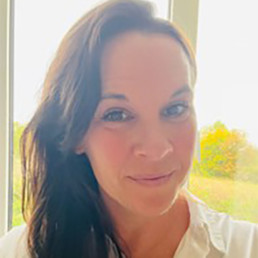
Written by Clare Haly
With a passion for truly inclusive teaching and learning, Clare has a background in education spanning 20 years. During this time, she has led at a senior level in both secondary and primary settings, improving whole school teaching and learning, cross-curricular literacy and staff development, and most recently Inclusion and SEND.
‘It is just so lonely. The playground, work, the other parents, the judgement and assumptions…It’s exhausting, and yes lonely…’
I am not the first person to comment on the complexities of flexible working. Thankfully voices are being raised that are far louder than mine, and there are some welcome shifts where understanding is beginning to seep in, that perhaps the ‘privilege’ of flexible working may actually be more of a necessity.
I get the challenge for leaders in education, I have lived it. We are teachers, we love our jobs, our vocation, our classes, our children. As if the Leadership do not have enough to think about. Children need excellent teachers in front of them, they require, and deserve consistency. But, and there is a but, it is well documented that teachers are leaving in droves, and this is not just because of the intense pressures of the job itself, but because caregiving responsibilities also really matter.
‘Family comes first’
There is no silver bullet or magic formula to help those people who find themselves in complex situations managing multiple caregiving roles. And this is not about the stereotype of the ‘working mum trying to have it all’. In the case referenced above, the man I speak of is grieving his wife who died suddenly. He has two sons, one aged 4 and the other just 6 months. This father also has an ageing parent, who is also bereaved and living with Parkinson’s disease. The logistical struggle is obvious. The emotional one is enormous. This man is also excellent at his job. One he cannot do well because of inflexibility at work. Imagine if his place of work was one of welcome and joy and a place where he could thrive within the time he could give knowing that that was enough. Instead he is rushed, stressed, apologetic, clock watching, anxious. Is this the premise for excellent output at work? What would the impact be of such a person in front of a class?
Part time does not mean part competent. Working flexibly does not mean working below par. Flexible working can be done well in schools. But it is yet to be the norm. It takes commitment, forward planning, clever recruitment, budgeting, compassion and a willingness to learn. It demands brave leadership with a trust in one’s staff and in oneself. But when successful, the outcomes are overwhelmingly positive. When teachers feel invested in, trusted, valued, they thrive. And the impact of a thriving, calm, indeed happy teacher on their pupils is not to be underestimated. You don’t need me to tell you that.
What I am questioning is how many of us truly practise this duty of care to well-being outside of the appraisal system and think holistically about the people that make our schools what they are, and the circumstances they live with outside of school. The amount of time I hear the well meaning phrases ‘family first’, ‘you must look after yourself’ – but in reality, as a caregiver, how is this meant to become your truth?
‘Middle years’
In Caroline Criado-Perez’ Invisible Women she points out that women in particular, are penalised socially and financially because of the assumed caregiving roles they carry. In our ‘middle years’ particularly, many of us as women, find ourselves not only grappling with the joys and complexities of raising children, but also tending to changing circumstances of family members, for those who become unwell, or the challenges that older age in particular can bring. So this is not about the balance of having children and having a career. This is about having a sense of empathy for the challenges staff face that pull them away from the classroom because they physically cannot be at the helm, rigidly, all the time. We are losing excellent, creative, inspirational practitioners because of a lack of flexibility.
The impact of stress on our educational colleagues and peers is well documented. The job is challenging enough without the guilt, pressure and constant stream of apology or sense of atonement that manifests itself while trying to juggle multiple adult responsibilities. I applaud those companies, institutions and yes, schools moving to acknowledge that life is not linear and that hours cannot always be rigid. But in education there is still some way to go.
Care packages and school clubs of course are invaluable and teachers that are also parents and/or caregivers are of course grateful for the support these services offer. But flexible working responds to more than logistics. Flexible working allows for improved wellbeing, not just time management: togetherness within whatever relationship has the need – in all phases of the caregiver spectrum, time for a neurodivergent child, an elderly parent, an unwell spouse; reflection, respite.
Being a caregiver should not be an alternative to a career in education, and too often teachers have to choose. I believe though that we have enough good educational leaders who have the creativity and courage to find a way to allow, indeed welcome, brilliant teachers back into school flexibly. Again: Part time does not mean part competent, flexible does not mean below par.
If we are to reach our ambition for a truly diverse edu-community then we must always be human first in our approach to how our schools are run. A truly inclusive school will empower their staff through flexible working where it is needed. As ever, it is all too easy to assume we know someone’s story. We must continue to look beyond appearances, there is always more than meets the eye.
My Experience as a Speaker at the Diverse Educators Conference in Scotland: A Step Towards Change

Written by Sadia Hussain-Şavuk
Sadia Hussain-Şavuk, originally a Biology teacher, is now a Diversity, Equality and Inclusion Lead working predominantly with schools within the independent sector providing teacher training, pupil workshops and consultancy in her main area of anti-racism. In addition to this she sits on a number of boards including the BSA/IELA Inclusion Advisory Board and is co-chair of the Curriculum Reforms workstream of the Anti-Racism in Education Programme.
In February, I had the incredible honour of speaking at the inaugural Diverse Educators Conference in Scotland. As the first event of its kind, the conference was a bold and inspiring step towards promoting inclusivity, representation, and meaningful change within education. The atmosphere was charged with energy, optimism, and a deep-seated belief in the power of education to shape a better future for all.
The Power of Positivity
One of the most striking things about the conference was the positivity and passion that the participants brought to the table. Educators from across Scotland, with diverse backgrounds and experiences, gathered together not only to share their ideas but to spark action. There was a sense of unity and purpose that made the event feel more like a movement than a typical conference. As I stood before such an engaged audience, it was incredibly reassuring to see how committed these educators were to making positive changes in their schools, classrooms, and communities. Whether it was promoting inclusivity in the curriculum, advocating for equitable opportunities, or fostering a more diverse learning environment, it was clear that the educators in the room were not just talking about change – they were living it. It’s moments like these that remind me why I became an educator in the first place: to make a difference. And seeing so many others who share that same drive was truly inspiring.
The Challenges We Still Face
Despite the immense positivity, there was an undercurrent of concern that stayed with me throughout the conference. While we celebrated the progress that has been made and the steps that are being taken to make education more inclusive, we cannot ignore the slow pace of change. It is difficult to not feel a sense of frustration when you consider how far we still have to go. Although there are pockets of progress, systemic barriers persist. In many schools, diverse perspectives are still sidelined or tokenised. Too often, young people with marginalised identities still face barriers to success, whether that be in terms of representation, access to resources, or the recognition of their unique challenges. As educators, we know that it’s not enough to simply raise awareness. The real work lies in creating long-term, sustainable change. But when progress is slow, it feels as though we are failing the very students we are meant to serve. The young people of today – those who will shape our tomorrow – are waiting for us to do better. And while I am hopeful for the future, it’s hard to ignore the gap between where we are now and where we need to be.
A Call to Action
The Diverse Educators Conference served as both a celebration of what’s been achieved and a reminder of the work that remains to be done. I left the event with a renewed sense of purpose, but also a deeper understanding of the urgent need for change. As educators, we must keep pushing the boundaries of what is possible. We must continue to challenge the status quo and demand that every child, regardless of their background, has access to a truly equitable education. We cannot afford to wait for change to happen on its own – we must be the ones to make it happen. The diversity, passion, and commitment I witnessed at the conference filled me with hope, but I also know that it will take all of us – working together, side by side – to ensure that the next generation of students can thrive in an educational system that fully supports their needs and potential. In the end, the Diverse Educators Conference wasn’t just a moment of celebration – it was a call to action. It was a reminder that our work is far from over, and that every step we take towards inclusivity and equity is a step closer to a brighter future for all. Let’s not rest until that future becomes a reality.
To Belong Is Not Enough: Why We Must Move Towards Mattering
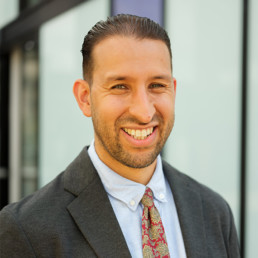
Written by Mohamed Abdallah
With almost two decades of experience, Mohamed started his journey in youth work and pupil referral units before spearheading groundbreaking inclusive practices and systems as a leader in an 'Outstanding' all-through mainstream school. Driven by a relentless commitment to positive change, Mohamed now dedicates his efforts to collaborating with school leaders across the nation as the Head of the Inclusive Leadership Course at The Difference.
“No one would care if I weren’t here.”
I can remember the words hitting me hard. As Designated Safeguarding Lead there were immediate red flags, but on a human level it broke my heart.
100% attendance, great progress, and never in trouble. On paper he belonged – but in reality he thought nobody cared.
Across the country, I hear the language of belonging increasingly referenced in discussions about student engagement, wellbeing, and success. And I welcome it. It’s a refreshing shift in our narrative about the student experience.
Still, something didn’t feel right. Then, it clicked.
It is not enough to simply belong; you should also matter.
My experience has shown me that a student can belong to a school community without ever feeling that their presence or contributions truly matter. A friend recently shared a US study with me that revealed a surprising finding: a sense of ‘belonging’ to a school community did not significantly affect academic performance. But instead there were other factors that determined success, such as participation and self regulated learning.
Think about it this way: You belong to a gym, but do the regulars know your name? You belong to a workplace, but do your ideas shape the way things are done? You belong to a school, but when you are absent, is there a noticeable void?
Mattering is more than belonging to a place or a community; it is about your significance.
One of the most prominent academic advocates for mattering is the US community psychologist Isaac Prilleltensky. He argues that developing a strong sense of mattering depends on two things: feeling you are valued, and feeling that you add value – whether that be within your workplace, your community, your family, or your friendship group. In the UK, my good friend Luke Billingham has been one of the most influential thinkers and writers on young people and mattering.
The Three Components of Mattering in Schools
After multiple voice notes back and forth, Luke and I sat down to discuss this matter (see what I did there!), and we asked:
If a student stopped coming to school tomorrow, would they feel like their absence was noticed?
Does every student have positive and affirming relationships with peers and at least one adult?
Are students actively shaping the school environment, or are they simply complying with expectations?
These questions helped us think more deeply about mattering. Of course, students should belong. But would we be satisfied as school leaders with 100% attendance, high attainment, and zero suspensions, yet students still told us, “No one would care if I weren’t here”?
They should feel they matter.
Reflecting on our experiences in different schools, Luke and I identified some key factors which we think enable students to develop mattering; Voice, Relationships, and Participation.
- Voice: Too often, schools claim to prioritise student voice while keeping real decision-making at the leadership level. But voice is not just about being heard. Schools must embed student experience and perspectives into decision-making, not just through surveys, but by creating opportunities for meaningful dialogue and change. Even when student perspectives challenge us, they offer uncomfortable truths we must engage with. When students see their input shape school culture, they matter.
- Relationships: A student might belong to a school, but do they have relationships that affirm their worth? Schools could cultivate opportunities for positive peer relationships to create strong social bonds, and to ensure every student has at least one trusted adult. Relationships built on trust and recognition, and environments where students feel valued and connected.
- Participation: Mattering isn’t just about feeling noticed, it’s about feeling needed. Students need opportunities to contribute meaningfully to their school communities. This goes beyond enrichment clubs; it means ensuring that students are actively shaping their environments. Whether through student-led campaigns, or engaging with the local community, authentic participation allows students to see their impact.
Why Mattering Matters for Inclusion
I worry that belonging is being used as a catch-all solution for inclusion, or dare I say it, a form of soft inclusion. For many students from marginalised backgrounds, belonging can feel conditional. They may be required to turn up, but do they feel like their presence and identity are essential? Do they see themselves reflected in the curriculum? Are their voices shaping school systems? Are their experiences acknowledged and valued?
Mattering addresses these questions by ensuring that students are not just included, but recognised as integral members of their schools. For students from underrepresented backgrounds, the feeling of mattering can be a protective factor against marginalisation and disengagement.
If we stop at belonging, we risk creating schools where students exist but don’t thrive, they comply but are disengaged, are included but unseen. The real challenge for schools isn’t just inclusion. It’s significance. Instead of asking, ‘Do our students belong?’ ask, ‘Do they know they matter?’

